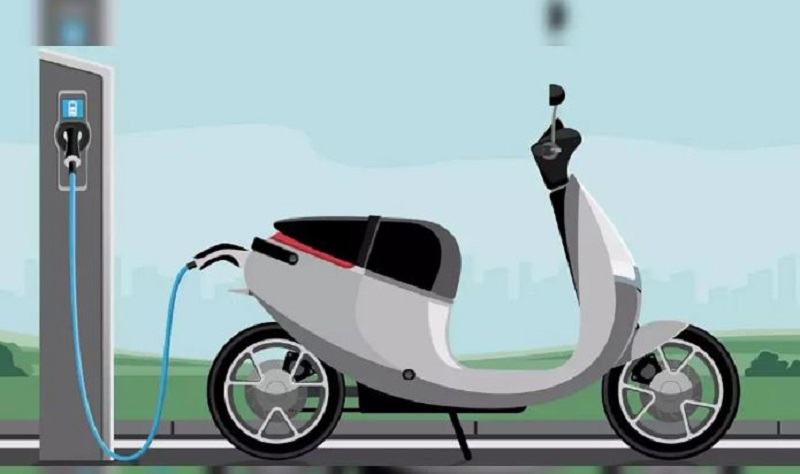
New Delhi: The electric two wheeler industry has been in a churn due to policy flip-flops last fiscal. It still managed to grow by almost a third. Data from the Vahan portal shows that 910,930 units of electric two wheelers (e2w) were sold in 2023-24, against 682,937 units in 2022-23, a growth of nearly 33.3%.
While the industry was dealing with policy uncertainties, a rollback in government subsidy pay-out quantum and litigation, there was a churn in the market share pecking order. This churn appears to have catapulted erstwhile smaller players to pole positions while relegating some market leaders to the fringes, and contributed to a healthy growth of the overall market.
A large part of the growth in sales last fiscal was due to hefty discounts being offered by most OEMs to lure customers, as subsidies receded and inventories began piling up. Also, significant distribution expansion by the legacy two wheelers OEMs meant their sales grew by leaps and bounds due to increased availability and attractive discounts.
Ola Electric, which was the market leader in FY23 with over 1.5 lakh units, nearly doubled sales in FY24 to over 3 lakh units and cemented its leadership position. In other words, Ola accounted for nearly every third e2w sold in India last fiscal.
The company said in a statement that “the past year has been a momentous one for us as well as the EV industry and we have been the market leader for the full financial year recording consistent growth in both volumes and market share. The fact that we recorded almost 1.20 lakh registrations in Q4 FY24 alone speaks volumes of our robust scooter portfolio, and we aim to continue the growth trajectory and contribute further to India’s electrification journey.”
Okinawa, which was the second biggest e2w OEM in FY23 at over 95,000 units, shrank to just over 20,000 units in FY24. Hero Electric and Ampere were among some of the other market leaders whose numbers fell drastically in FY24 over the previous fiscal. Largely, the fortunes of these companies flipped due to subsidy rollback and overall policy uncertainties.
But the dramatic rise of legacy two-wheeler companies TVS Motor Company, Bajaj Auto and Hero MotoCorp in the market share pecking order is worth noting. TVS climbed from the fourth position to the second in FY24, selling nearly one lakh additional units and accounting for a fifth of the market.
Hero MotoCorp increased sales exponentially, from under a 1000 units in FY23 to well over 17000 units in FY24. And Bajaj nearly quadrupled its e2w sales to cross the one lakh unit mark in FY24. Ather also logged impressive growth, crossing the one lakh unit mark; Bajaj and Ather were neck and neck last fiscal.
In a nutshell, the top three e2w OEMs - Ola, TVS and Ather - nearly sold as many units in FY24 as the entire industry sold in the previous fiscal.
Policy pain
The e2w OEMs can claim subsidies under the new Electric Mobility Promotion Scheme 2024 (EMPS) from April 1. Under EMPS, subsidy amount has been slashed, vehicles and OEMs need to register afresh and the scheme is valid only for four months. The scheme has an outlay of INR 500 crore for four months till July 31 and about 3.72 lakh electric two and three wheelers will be provided subsidy.
The biggest pain point for the e2w industry - which accounts for the biggest component of subsidy under FAME II as well as EMPS - is the recertification mandate. Nikhil Bhatia, Co-Founder and COO of HOP Electric Mobility, had said earlier that “The new EMPS 2024 scheme notified for four months helps industry deal with uncertainty but the hassle of re-certifying the vehicles could have been avoided by simply extending the vehicles already certified under the earlier scheme. We hope that the recertification process is quick as the scheme validity is only for 4 months.”
Certification has been a major stumbling block in the past as well. In 2022, 13 e2W manufacturers were first slapped with penalties and then denied subsidy reimbursements by the government over allegations of misappropriation of subsidies. The allegations pertained to lower-than-mandated levels of localisation by the OEMs. Later, many discrepancies were found in the entire certification process itself.
Also, questions remain about the fate of vehicles which have already been manufactured by the OEMs in March, shipped to dealerships but havent been sold. These vehicles are being sold at discounted prices, net of subsidy, as of now. But vehicles which do not get sold by 31st may not qualify for subsidy since EMPS kicks in from April one. In any case, under EMPS two wheelers are eligible for INR 5000 per kwH and the subsidy is capped at INR 10,000 per vehicle with the factory price of the vehicle not exceeding INR 1.5 lakh.
One industry executive said that the cost of manufacturing has reduced significantly as the industry achieved economies of scale and prices of some critical components, such as batteries, crashed. Today, batteries account for just about a third of the cost of making a two wheeler against about half the cost some years back. The subsidy amount has also been cut gradually, from about 45% of the vehicle cost or INR 30,000 per kWh initially, then reduced to INR 15,000 per kWh and and now to INR 5,000.
Way forward
The industry is in dialogue with the government over subsidy mechanisms amid pleas for continued support for some more years. Meanwhile, legacy two-wheeler OEMs have surged past pure electric manufacturers on the strength of their distribution reach and marketing muscle. It remains to be seen whether discounts which were available last fiscal would continue for some more time, at least until the policy imbroglio gets sorted out. (with Agency inputs)







